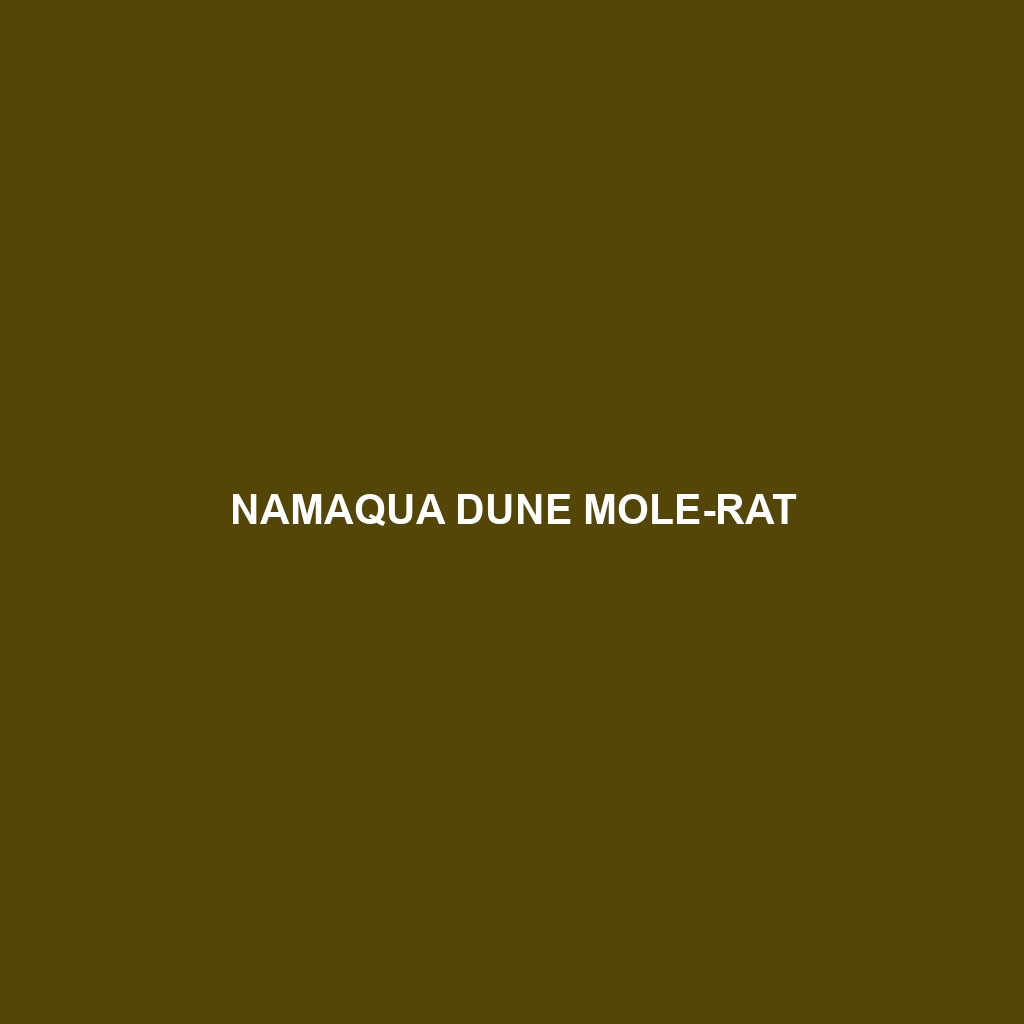Cape Dune Mole-rat Description
Common Name: Cape Dune Mole-rat
Scientific Name: Bathyergus suillus
Habitat: The Cape Dune Mole-rat is primarily found in the coastal regions of South Africa, particularly within the fynbos and sand dune ecosystems of the Western Cape. These rodents thrive in well-drained sandy soils, often inhabiting areas near rivers and estuaries, which provide suitable conditions for burrowing.
Physical Characteristics: Adult Cape Dune Mole-rats typically measure between 20 to 30 cm (8 to 12 inches) in length, with a weight ranging from 500 to 1,500 grams. Their fur is short, dense, and usually a sandy brown color, which provides camouflage in their natural habitat. Distinctively, they have powerful forelimbs equipped with robust claws, which are adapted for digging, and small, nearly invisible eyes that are an indication of their burrowing lifestyle.
Behavior: Cape Dune Mole-rats are primarily solitary creatures but can occasionally be found in small family groups. They are predominantly nocturnal, using their keen sense of smell to navigate through their subterranean burrows. Their burrowing behavior not only helps in creating homes but also aerates the soil, showcasing their ecological significance. The Cape Dune Mole-rat is known for being relatively shy and elusive, making direct observations somewhat rare.
Diet: The diet of the Cape Dune Mole-rat consists mainly of underground plant parts, particularly roots and tubers, which are abundant in their sandy habitat. They have adapted to a herbivorous diet that allows them to thrive on the limited food sources available in their environment. Occasionally, they may consume seeds and plant leaves, showcasing a diverse feeding habit that supports their energy needs.
Reproduction: The breeding season for the Cape Dune Mole-rat typically occurs in the spring and summer months. After a gestation period of approximately 3 months, females give birth to a litter of 2 to 6 offspring. The young are born blind and helpless and rely entirely on their mother’s care during the initial weeks of life. As they mature, they begin to explore their surroundings under the watchful eye of their mother.
Conservation Status: The Cape Dune Mole-rat is currently listed as Vulnerable on the IUCN Red List due to habitat loss and degradation caused by urbanization and agriculture. Conservation efforts are being implemented to protect their natural habitats and address the threats they face in the wild.
Interesting Facts: Cape Dune Mole-rats have a unique method of communication, often using a combination of tactile cues and vocalizations to interact with each other. Additionally, they play a crucial role in maintaining soil health and fertility due to their extensive burrowing activities, which help in the redistribution of nutrients.
Role in Ecosystem: As a burrowing species, the Cape Dune Mole-rat contributes significantly to the aeration and structure of the soil in their ecosystem. Their foraging behavior helps to control plant populations, ultimately supporting biodiversity within their habitat. Furthermore, they serve as prey for various predatory species, creating a vital link in the food chain.
